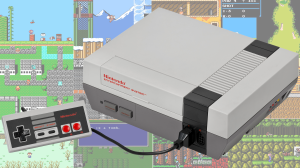This week, Disney Illusion Island will release exclusively on Nintendo Switch, offering a new platforming adventure starring Mickey, Minnie, Donald, and Goofy. The game is a new adventure from developer Dlala Studios, the team responsible for 2020’s Battletoads reboot. CEO and creative director AJ Grand-Scrutton and lead designer Grant Allen sat down to speak with ComicBook.com, revealing several details about the game’s development, as well as the challenges associated with releasing a video game centered around Mickey Mouse in 2023.
Videos by ComicBook.com
Disney Illusion Island is a platforming game inspired by classic Mickey Mouse games from the ’90s. During our interview, Dlala Studios cites games like Castle of Illusion and World of Illusion as inspirations, though the game seems to pull from a number of other works. Notably, the game’s animation is heavily based on the Mickey & Friends shorts from Paul Rudish. Last but not least, the game also pulls from the “Metroidvania” sub-genre, with players gaining new abilities throughout their journey, which allow them to access new areas of a connected overworld.
Keep reading to see what AJ Grand-Scrutton and Grant Allen had to say about Disney Illusion Island!
Art Style

ComicBook: One of the things about Disney Illusion Island that you notice right off the bat, is that the art style is inspired by the Mickey Mouse shorts of the last decade, and the animation that you see in Mickey and Minnie’s Runaway Railway, the amusement park ride. There have been so many other takes on Mickey throughout the character’s history. What was the reason this style in particular was chosen over other versions of the character?
AJ Grand-Scrutton: So for us, it’s not a complete one-to-one, so we’re not a game conversion of the Paul Rudish shorts, which are incredible. But I think what’s clear is that the shorts and us have very similar inspiration points. So for me, I loved that classic ’30s, ’40s Mickey, when he was quite cheeky still, the white face design. I always found that just a bit more of a striking design.
So when we came to figuring out what we wanted our Fab Four to look like, the two main things we took into account was, first of all, let’s make designs that make sense for the game we’re making. We’re making a platform game, we know the camera sometimes zooms out, so that means we want to emphasize bigger hands and bigger feet, which you can see in our design, and longer legs, because these are all the key things that players need to be able to read on the screen.
But then, in terms of the actual inspirations, we really went through the whole of Mickey’s hundred year history, and we were like, “Okay, well what do we love about these designs? What do we want to bring to the table?” And I think for me, I just had that personal bias where I just loved that early Mickey stuff, those first couple of decades when he was cheeky, and it’s always been more of the white-face Mickey that appealed to me personally, and I think that’s probably just because as I grew older, the pink-skinned Mickey was more of what was associated with the younger skewing part of the brand.
So we took all that into place, and then we looked at some things you don’t want to change. You want to have Mickey in his red shorts. You can change the shape of the shorts, but you want to be Mickey in his red shorts. But then for Minnie, it was very much like, “Okay, well that iconic pink dress and high heels aren’t going to work if she’s doing back flips around a mountain top.” So that’s why we put her in a jumper. We gave her the flats.
It was just us taking what we really loved about the character in the previous designs, and then making it applicable for our game, and what the players will be doing in our game.
Epic Mickey
ComicBook: It’s interesting you mentioned how you associate the white face Mickey more with… not a mature, but a slightly older take on the character. Now did you guys look at what Warren Spector and his team did with Epic Mickey in that regard?
AJ: Oh definitely. Epic Mickey‘s awesome, especially that first one when it came out, absolutely adored that.
We went through Mickey’s entire video game history, really, didn’t we, and Grant went through some of the more obscure stuff, the Japanese stuff, but we went back. We looked at Epic Mickey, we looked at World and Castle of Illusion, Magical Quest, because it’s important for us that we respect what had come before us. We respect that legacy.
I think that the most impressive thing about Epic Mickey for me in terms of design was, it’s not easy to realize 2D characters in 3D, and I think they did a really fantastic job of making a Mickey that felt authentic whilst being in 3D space.
Playable Cartoons
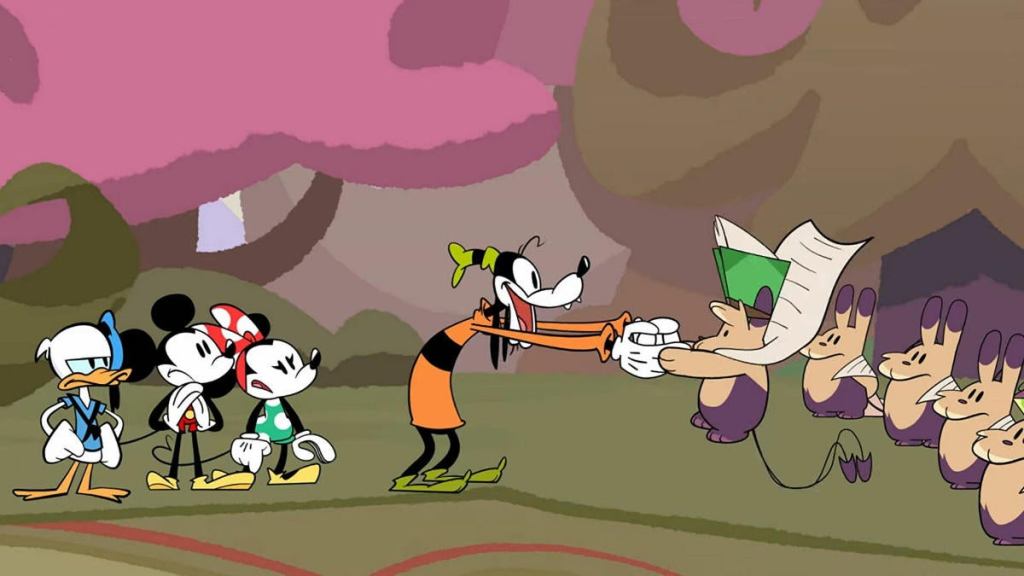
ComicBook: Now you were talking about how the camera zooms in and zooms out. There’s a real seamlessness to the way that Illusion Island shifts from gameplay to cut scenes. Was this important to maintain the idea of the game as a “playable cartoon?”
AJ: Yeah, definitely. Yeah, goal … day one, playable cartoon was on the wall, weren’t it?
Grant Allen: Yeah.
AJ: I think that when we were discussing the pillars, I think that pillar was even a non-negotiable for us.
So it was really key because we’ve really got those two different styles of cut scenes. We’ve got those in-game storytelling moments, and then we do have these big story beat ones, which are the more animated, similar to the short ones. And we never wanted it to feel too jarring. We always wanted it to feel just like a natural progression between those moments, so that was super key for us.
Camera Work
ComicBook: Speaking as an older gamer, one thing that becomes a little more frustrating with a lot of 2D platformers is, I feel like a lot of characters end up being very, very small. So you end up squinting, trying to keep track of your character. But one thing that I’ve liked from what I’ve seen of the game so far is, you guys have to be panned out a lot of times for some of the bigger shots, but you do zoom in a lot. Was that something that you guys were also aware of?
Grant: Yeah, the camera was a long grueling process for us. I think initially when we were creating the game it was like, “Oh yeah, there’s going to be a singular camera for both multiplayer and single player. That’s just how it’s going to be,” because we never ever want people to feel like they’re being left off the screen or anything like that when they’re playing in multiplayer. And then slowly over time that little thing in the back of our head was going, “No, no, I think we need to have two separate ones for single and multiplayer.”
So we ended up doing several passes across that, just because, like you mentioned, there’s a lot of times where we zoom it out so the player can see everything, or for those big visual beats that we have through the game, we zoom out. But we have zoomed in on single-player a lot, just where it makes sense for the player, and we do it in multiplayer as well, because although we do zoom out, zooming in and getting the player to have that grounding of where they are and then naturally pulling out slowly is very important, because like you said, you always want to know where your character is, right?
AJ: Yeah, it’s funny. Grant’s team did a fantastic … it’s one of those [times] where I play the game, and I’m really happy, the camera just seems to be going seamless. But Grant’s team basically mapped out every single square inch of that game with bespoke camera triggers so that every single shot you are seeing has specifically been built for that shot. I think that was probably the longest ongoing bit of work. That probably started not long after pre-production finished, and we were doing that right up until the gold candidate was pulled from our cold dead hands.
No Combat
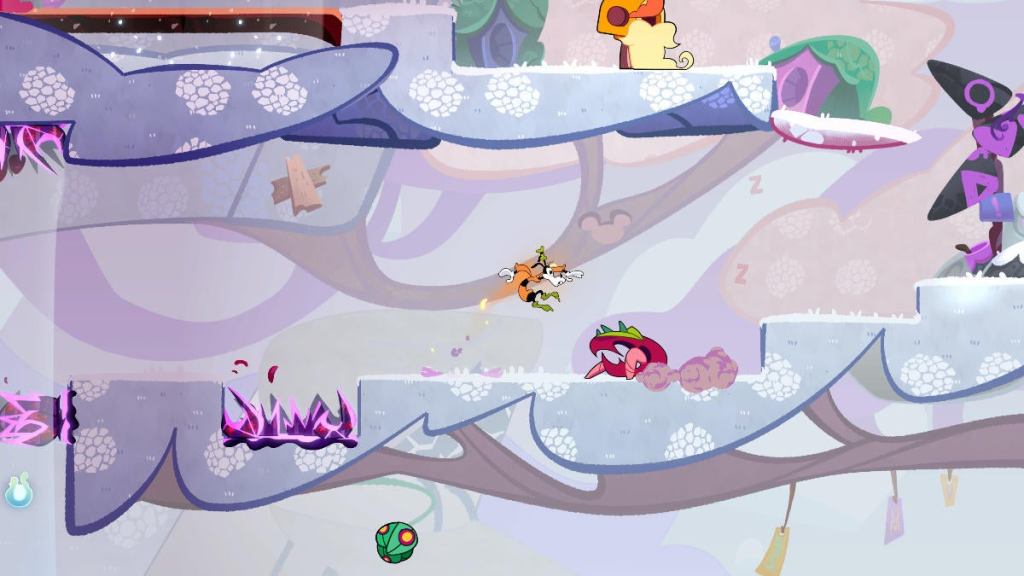
ComicBook: In the game, there’s no combat to speak of. What was the motivation for that decision?
AJ: I could tell you the motivation for not making that decision to start with, which was fear. It’s a funny one. We said before, we only ever considered it because we felt we had to. We only ever considered having combat because we were like, “It’s a Metroidvania. Every Metroidvania has combat.” But we never really wanted it, and the thing we’ve noticed, I think retrospectively in the last month or so, is that Grant and I have gone back through the process of making this game, and we realized that before we’d made the decision fully to do no combat, we’d said, “Okay, well look, let’s design our enemies, and if we feel like some of them you should jump on their head, let’s just do it and then we’ll see where we end up.”
And I think we got a couple of months in, and we had 12 enemies and there was two of them you could jump on, and it felt really forced and we were like, “I know we’ve kept the post-it up because we feel we have to, but we are even subconsciously designing the game without combat.” We’re trying to tell ourselves through the design, we don’t need it. But it’s just scary. It seems silly to say, we don’t have scary jobs, but when you talk about platformers and Metroidvania especially, combat’s normally a core element of the game, and I think that is why we held onto it for so long, and we were so happy when we took it out. And being completely honest, we took it out in stages. There was still a little element to the bosses. Quite late in the day, you still had a little element of jumping on the bosses in one way or the other.
And I think we did the second from last round of user testing we did with our wonderful partners, DAQA, and we got the results back, and it was like, “Oh, we really love how the game’s no-combat. Why are you making me jump on the bosses?” And we were like, “Oh, okay.” So then we took out that, we changed that, and we were like, “Oh, wouldn’t it be much more fun if you did these things, and then these things in the environment?” And we did that, and then we went for another round of user testing at the end, and it landed great, and we were like, “Oh, okay.”
So, we were scared to take it out, and then we were scared to fully commit, but once we did, we were so much happier and the impression we had from the players, at least, was they were much happier.
Grant: Yeah, I think it’s really interesting because you have to think about it from a player perspective as well, because if you are playing in multiplayer and you can jump on the enemies and get rid of them, the person who’s ahead in the line of players that are running through will do that, jump on it. They’ve had some action, that’s really cool. But then those three people that are behind them, what do they do during that segment? They’re doing nothing.
So it’s almost like you’re taking away an experience from all of the players. In removing the idea of eliminating enemies, it just means that everyone has that opportunity to have that awesome movement of avoidance as they’re going over it. It landed, and back into one of our pillars we had, which was awesome alone, better together. It’s like no one’s missing out at any point. Everyone’s getting the same awesome experience as they’re going through.
The Kiddie Perspective
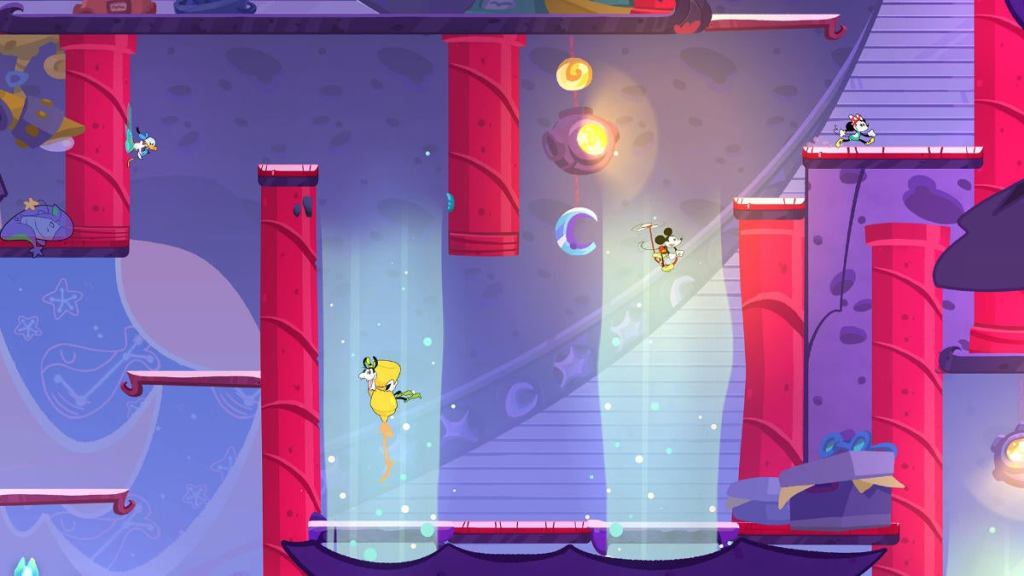
ComicBook: When you’re dealing with a franchise like Mickey, you’re going to combat people who are going to go in with a perspective that this is going to be a “kiddie game.” Was that a concern that when you guys were thinking about eliminating the combat, that that was also going to work against you in that favor?
AJ: Look, we’d be lying if we said it didn’t cross our minds, but we couldn’t let that dictate our decisions. We knew, and as Joe, our wonderful PR partner, and our marketing team knew, we knew that part of the mission we had was that you put Mickey Mouse on something, and in 2023 that ages it down naturally. That is the reality of the situation. The modern shorts are fantastic and I think they’ve helped show that Mickey is wide-reaching, but still from a mainstream perspective, as soon as you put Mickey on it, people do think it ages it down. But that wasn’t the case when we were kids. Castle of Illusion, World of Illusion… were just badass games. And so we couldn’t go in there with this agenda of, “Okay, let’s make it super clear that this game’s not for kids,” because wasn’t the point.
The point was, it’s a family game, and that doesn’t mean it’s a kid’s game. That means us two can play together, put it on one heart, and be idiots who have to hug the whole time, because we’re terrified of taking hits, or so I could play with … we could both play with our different nieces and nephews, put them on infinite health and enjoy it.
We knew when we took combat out, that it was potentially adding to that conversation of, “Well this is a kid’s game,” but at the same time, I think if people are going to cast that judgment, I think they probably will cast that judgment whether there is combat or not.
Challenge Level
ComicBook: You mentioned Castle of Illusion and games like that, a lot of those Disney ’90s platformers were really unforgiving in terms of difficulty. Were there a lot of discussions about how to make Illusion Island challenging, while also keeping it accessible?
Grant: Yes, there was. There was, from the beginning as well, through any process of mechanics or movement or enemies, it was always figuring out what the challenge is with that mechanic or enemy, and then figuring out, well what are the aspects of that that people would struggle with? So it was always trying to make as welcoming a game as possible, so we’d always go through that process, because we’d always know, well these are the things that we want to be available for those people that do struggle, but on a surface level we wanted there to still be a challenge, and a challenge that ramps up throughout the game itself. Which has added to the concept AJ was speaking about, where it’s a family game and the features that we’ve put in are welcoming, because gaming and, I would say Mickey, is for everyone, so we wanted to make sure that… I still die a lot near the end of the game.
Even when we’re doing one heart runs and stuff, we still find it very difficult, and we put such a focus on this idea of the free-flowing, movement and the movement is the core of the experience, and you can learn to do that. You can play through the game, you can have a fun time, and if you’re not having a fun time because you are taking hits, you can give yourself a bit more hearts on there. But equally, if you want more of a challenge, and you want to master those movement mechanics, you can go completely the other way with it.
AJ: Just to add to what Grant said as well, I think what was interesting for us, is the only thing that the difficulty, if you want to call it the health selector or the character select changes, is your base amount of starting health, because when we were looking at what are the different options we could put into difficulty, we actually realized a lot of those weren’t difficulty things, they were welcoming.
So that’s why we just took a load of that stuff out and just put it in the settings menu, because somebody playing one heart run may still want to make some of the timed mechanics slower or they may still need jump assist because they still want a challenge, but maybe their reaction time’s a bit slower, or they just struggle with that stuff. So it’s really interesting to us that the concept of difficulty got replaced by starting health, and then all those other options we would’ve rolled into preset settings, we just put to the player’s choice in the settings menu.
Mickey’s New Friends and Foes
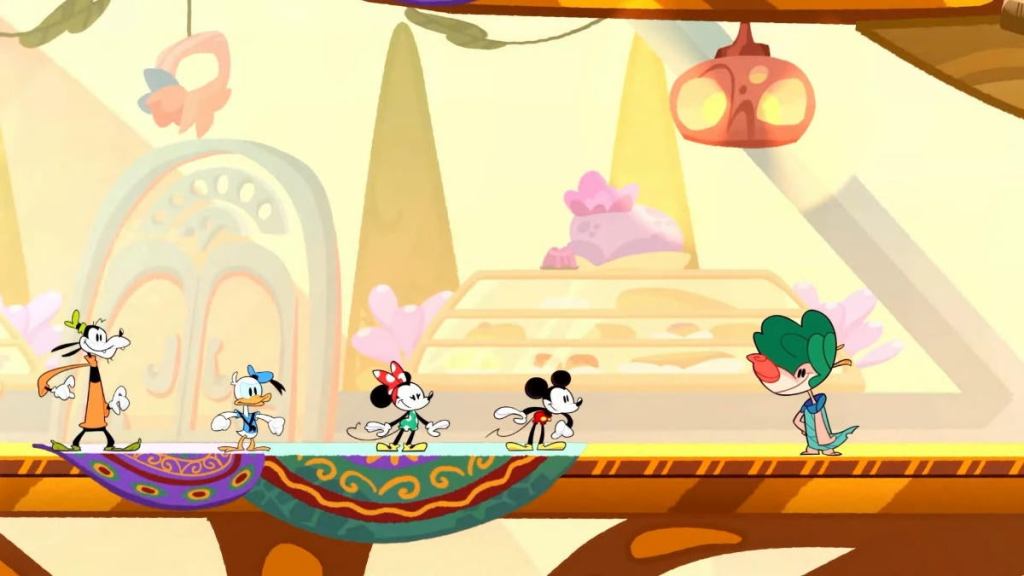
ComicBook: Obviously the main characters are all characters who’ve been around for a hundred years. What were the challenges of creating new characters, the citizens of Monoth and the enemies… what were the challenges in making characters that could seamlessly blend into that world?
AJ: It was really, really interesting. So character design-wise … so I don’t want to bore you too much with the process … but I’d quite often just write a quick profile, like, “Hey, here’s this character, here’s their name, here’s their purpose, and here’s their top three personality traits, and a couple of reference points.” One of our characters had Betty White as a reference point, and then Lucy, our art director and new character designer, would start drawing. From the visual perspective, Lucy just so naturally fell into this style, that the characters just all look Disney, and a big part of the feel is the look. So I think when you meet Mazzy or Gido or characters like Dex early on, they feel like they could exist in Mickey as well, but they also feel unique. If you ever saw them walking around Mouseton, you’d expect they were on vacation rather than living there.
But I think what was interesting for me was figuring out their personalities and how to make them talk to the Fab Four and it makes sense, and that was a struggle at first, because I didn’t really know how to write for the Fab Four. It wasn’t really until I’d got used to, “Oh okay, this is how Mickey talks, and Donald won’t say these certain words, and Minnie would say this instead of that.” And I think when Kelsey and I were writing it, I think once we figured out the tone and voice of the Fab Four, it made it a lot easier to write for our new characters, because you could have conversations that felt more natural, but you also knew that… well these characters need these little quirks, because otherwise they’re not inhabitants of Monoth. They are just toons we’ve taken from anywhere.
But it was a really fun challenge, really fun. Creating a brand new world and new cast of characters for these iconic characters to interact with, it was an absolute blast.
Switch Exclusivity
ComicBook: The game is an Nintendo Switch exclusive. Why was that decision made?
AJ: Yeah, it was there from day one to be honest. I think when we were figuring out between us what we’re going to do with this, and what excited us was … I talk about a lot when we were kids. When we were kids, we loved Castle of Illusion, World of illusion, but a lot of us grew up as Nintendo fans. My first console was the NES that I got for my fourth birthday. Some members of our team don’t even know what NES is, because they’re too young, and that’s horrific. But it just felt like a great natural fit, and for us from a really, really selfish perspective, we got to make a Mickey Mouse game that comes out on Nintendo. That is … we’ve ticked off a massive pair of bucket list things right there.
And I think when you think about the audience as well, to bring these characters back to a video game, I think it’s the first time all four of them are together in a game as well. To do that, through an audience we’re going for, Switch was the perfect fit.
ComicBook: Has there been any talk about eventually bringing it to other platforms?
AJ: The only conversations we have are about the Switch. At this point in time, it’s been all about the Switch focus for us. And I think we’ve been very, very grateful for having that focus, because building this seamless world to the platformer was a good challenge, a fun challenge. But I think if we’d been balancing like, “Okay, we’re going to make it for three to four consoles all at once,” I think we would’ve been sweating a little bit more than we were.
DLC
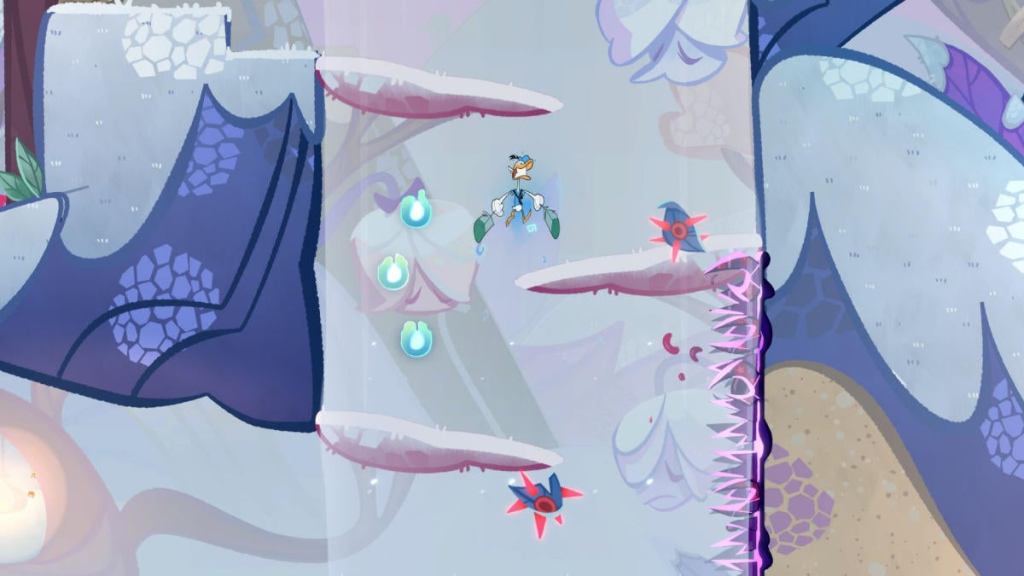
ComicBook: Now that you guys are almost at the finish line, have you started talking about DLC, additional characters, things like that?
AJ: Oh my God, Disney are probably sick of hearing from us how much we love this game, right? I’m not lying to you when I say, I reckon seven or eight months before we finished, we were already saying, “Hey, I know the game’s got to come out, but we’ve got lots more stories we could tell,” and I don’t want to give a spoiler, but there’s even a reference, there’s a line in the game that a character says, which almost alludes to that fact. There’s nothing … I can’t give you … I’d love to give you an exclusive like, “there is DLC coming.”
All I can tell you is that we 100% have more stories to tell. We’ve got loads of… Grant and I’ve got notebooks of ideas of how we could bring other Mickey World characters into the game, but the reality is that I think it comes down to… we love this game, but does everyone else? Does the game come out and does it find its audience? And I think if that’s the case, I think it makes it a much easier conversation for us to bring more to the world of Monoth, but all we hope right now is that everyone loves it as much as we do.
Unlockables
ComicBook: One of the big unlockables throughout the game is Mickey memorabilia, which spans the history of Mickey Mouse and Disney as a whole. Was there ever any consideration in adding, not DLC, but unlockable costumes and such, for the playable characters?
Grant: So would I have liked to? Taking off my knowing how it’s made hat, a hundred percent. The problem is, we are suckers who hand key our animations, so because all the animation in gameplay… not the cut scenes, but in gameplay… is all hand keyed frame by frame, it effectively means redrawing big chunks of all those frames for any costume changes, and I think, even though he’s not in the building right now, my tech director’s ears are probably on radar mode, because we already are pushing the [Switch] device to its limit in terms of texture memory. So yeah, it would’ve just been a nightmare logistically. Just as a ballpark you’d be talking about, for every costume, an additional seven months of time per character, and then it probably wouldn’t even fit on the device.
So that’s not to say we won’t try and find a way to do some stuff one day if we get to come back to the game, but definitely for getting this game out, launched, and feeling good, as much as we would’ve loved, to it was literally not possible for us.
Character Differences

ComicBook: Any time you have a multiplayer platformer like this, there’s the challenge for developers to decide whether to make all the characters control the same, or make each one unique. Disney Illusion Island tends to stick with the former. Was that a talking point throughout development?
AJ: Early on, we were taking the Super Mario Bros. 2 approach with different abilities, jump heights, and then started playing around with that. And then we slowly realized, “well I want to play as Donald. I want to play as Donald all the way through. Why is there stuff that I can’t do as Donald? Why is a certain ability only with this character?”
People have favorites, and people should be able to play as their favorite, and they should be able to neither have a positive or negative, because they’re playing as a specific character. We shouldn’t ever want anyone to feel as if there is a worse character, but looking at that and then figuring out the structure of the game and how we wanted it to work from a Metroidvania perspective, they do all need to number-wise be the same. If you look at all the numbers for everything, we have all the settings, they’re all exactly the same, but it’s, as mentioned in previous interviews, it’s the animation which tricks your mind basically into thinking that they feel different.
I don’t know if you want to talk to the animation slightly?
Grant: I’ll talk briefly to it. I don’t fully understand the illusion. It works, but yeah, when you play as Goofy, it does feel like Goofy, bigger and lumbering, and Donald feels more spritely. And that’s Eric, our animation director, and his wonderful team, and they took these analogies… Goofy’s a slinky, Minnie’s a paper airplane, Donald’s a slingshot, and Mickey’s a bouncing ball, and then Eric got his animation team to keep those analogies in mind when they were animated.
So when you see Goofy, he does a back flip and he looks like a slinky would look if you’re putting a slinky over the top of itself, and I think that really helped, and more credit should go to Ian than he actually gets, because when we made the decision to go with the same settings, we were quite worried, because we were like, “this is the right move for the game, but are all the characters going to feel just too in sync,” and Eric was like, “no, don’t worry about it. I’ve got this.”
And then when we got those first sets of… it was the run, those first runs, were some of the first animations we put in. We were like, “what is this witchcraft? Why does it look like this character is faster and this one is slower?” And Eric, who is just the most wonderful, lovely, chilled out guy, who somehow we convinced him to leave California and come to Essex, and he’s just like, “yeah, it’s what I do,” just like it’s nothing.
ComicBook: Was that the motivation then, for why characters have different double jump abilities and things like that?
AJ: Yeah, definitely. We wanted them to feel different, and they’ve got different personalities, so they should show them, right? So Goofy is very food-orientated, so all his stuff is food, and Minnie is super-adventurous, and that’s why she has more stuff around travel and mountain climbing and things. And a lot of Mickey’s stuff is a reference to classic cartoons: a giant pencil, a cycle copter. And we knew from day one Donald was going to be the butt of the joke, and he’d always get the worst thing and that is why, not to give a spoiler, but it’s quite early in the game, they all get these amazing wall jump abilities, and then Donald gets given a plunger, which our audio department had a lot of fun doing the audio for a plunger scraping down a wall.
But yeah, we wanted them to feel different. We wanted it to feel like they’d each been given something else, and we wanted it to be a reflection of their personalities.
Battletoads to Mickey and Friends
ComicBook: This is the team’s second project, following Battletoads. How did the studio get involved with Disney with this? What was the process there?
AJ: Yeah, so it’s the second project off Battletoads for this team as it is now, but we’ve been kicking around for 11 years as a studio, and actually we had a previous relationship with Disney from 2015, 2016, but that didn’t work out, because I think things had just changed at that point with the gaming landscape in general. So we were making Battletoads, it was around 2019, we were now… for a studio like us, I’d love to tell you we are cash rich and do what we want, but we really have to roll from one project straight into the next. And we’re very lucky because we grow year-on-year, and we are able to sustain a wonderful team, but we still roll from one project to the next.
So we are thinking about what’s after Battletoads, and Disney and us hadn’t spoke since 2016, and it wasn’t because we weren’t on talking terms, it just… well it was a different situation then. They’d gone purely into licensing. We didn’t know if it fit for us, and so we just thought let’s reach out. And we ended up having a conversation, and it was a couple members of the leadership team from Dlala with some of the wonderful people like Luigi and John Drake at Disney, and I think it was originally scheduled for an hour, and I think we went closer to two, and we just chatted and we had a great time, and we spoke about how we developed as a studio. They explained how Disney had grown and what they were doing, and it was just lovely. It felt like catching up with a friend you hadn’t seen for ages.
And at the end of the call we were like, “okay, well shall we try something? Does this work?” And we agreed that we’d go away, we’d put together a quick idea… we knew it’d be Mickey & Friends, we’d discussed that… and so we left and then Grant and I put together a really quick pitch on what we’d do with Mickey & Friends as a studio now. And it was just a lovely back and forth for a little while. We’d send somebody over the fence, we’d have a conversation… and I was thinking about this the other day and I said to someone, “the weirdest thing is, I don’t ever remember a formal green light.” I don’t ever remember that meeting where it was like… this is the yes or no meeting.
I can remember talking to them at the start. I can remember loads of conversations going, and then next thing I know we finished Battletoads, the team had two weeks off, and then we were making what became Illusion Island. So it all felt really natural and great, and it’s been super weird, because even publishers we’ve worked with where we’ve either, I think, had a really good time working on a project, but there’s been personality clashes, or we’ve loved the people and there’s been work clashes. There hasn’t been that on this. The relationship for making this game was just easy and wonderful, and from our perspective at least, we really enjoyed working together.
So yeah, it all just came super, super naturally, and it is weird, because the strangest thing about it was, we didn’t know if we should reach out. We didn’t know in 2019, “have things aligned, how have things changed?” And I’m so, so glad we did, because we got this wonderful project out of it.
What’s Next

ComicBook: Because we’re at the finish line, does that mean you guys are already onto the next thing? Or at least is there anything that you can say about what the next project is for Dlala?
AJ: There’s nothing I can say. What I will say to you is, we are definitely not sitting around waiting for the game to come out.
Grant: Well, we are.
AJ: Yeah, we’ve started on what’s next. We are in the very early stages, figuring out our feet, and figuring out where to take things. We’re super, super excited to talk about what we’re doing, but as you probably saw after Battletoads, it’s very likely we won’t talk about it for a couple of years. But I feel that we learned a lot of lessons on Battletoads that helped us make Illusion Island better, and we learned just as many in a different way on Illusion Island that have improved us as a studio.
It was strange. We all came off the back of Battletoads very spent, and we’re like, “oh man, we did a lot wrong.” But yeah, I think we’ve come off Illusion Island feeling like, “that was great. That was awesome. We did that really well. Now let’s try and make a game slightly different to how we have before,” and I think that’s exciting for us.
So yeah, we are making something, but it is the early days. It is the lovely white blocking, scribbly bits of paper. In fact, there’s a notebook right here that says what it is. We will, of course, tell you as soon as we can, but yeah, just know that we are not going to suddenly go under two weeks after this game comes out.
*********
Disney Illusion Island will release exclusively on Nintendo Switch on July 28th.
Are you looking forward to Disney Illusion Island? Let us know in the comments or share your thoughts directly on Twitter at @Marcdachamp to talk about all things gaming!





